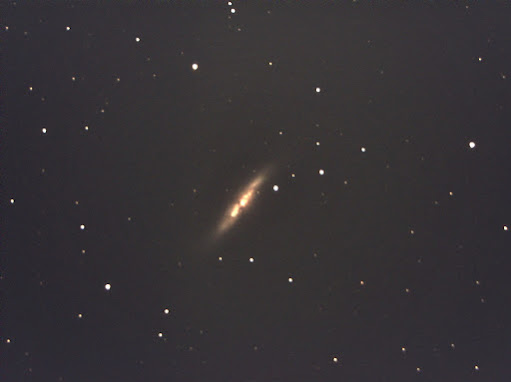31st December 2020
So as this year of the plague draws to a close I thought I would look back at one of its more positive aspects. For me this was getting back out under the stars and doing some observing. The Grand Tour Project was created as motivation to get out though my initial plan of it taking two years was over ambitious. The observation of Perseus open cluster NGC 1513 ended this years observing run which had started 111 objects earlier with the giant elliptical galaxy M86 in Virgo on the 11th May. These early observations were done at a rush just ticking objects of the list rather than doing them justice. Later on I decided to take more time with each object and find out more about each of them.
As a comet fan the highlight of the year was without question Comet C/2020 F3 Neowise. A bright naked eye comet reaching above magnitude 1 and visible from suburban skies occurs maybe once every decade. This one also looked like most peoples idea of a comet with a long sweeping tail. Other highlights include the bright Supernova in M61 and getting a look at Mars during this favourable apparition.
Every year I am going to pick ten objects from my observations to return to sometime and have a closer look. These will be objects that have either intrigued me or surprised me or maybe I have just taken a fancy to. This year I have selected the following:
NGC 1275 and the Perseus Galaxy Cluster. Vast group of galaxies in one field of view, awe inspiring.
NGC 520 This pair of colliding galaxies in Pisces looks unusual even on my small image.
NGC 891 Impressive perfectly edge on spiral galaxy in Andromeda.
NGC 7662 Blue Snowball Planetary Nebula Andromeda. Surprising amount of detail on small image.
M33 Local Group spiral galaxy. Amazing star clouds. Want to take a more detailed image.
NGC 7320 and Stephans Quintet. Just dots on my image.
NGC 7479 Beautiful barred spiral in Pegasus.
NGC 6819 Surprisingly rich open cluster in Cygnus.
NGC 6631 Could not quite work out where this Scutum cluster started or finished.
NGC 6857 I need to have another look at this Cygnus Planetary Nebula.
Although I prefer visual observing my light polluted skies do not allow proper dark adaption to see faint objects. This year I acquired an Atik Infinity colour video camera so I can view faint objects "live" on a laptop screen. This camera has made a big improvement to my observing and I hope to do a review of it sometime.
Writing this blog was inspired by "Uncle" Rod Mollise' astro blog which I have followed for a long time. Like "Unk" I have made an effort to observe the Orion Nebula M42 every Christmas Eve and this year despite being swamped by moonlight I got a nice view with my 4" f5 refractor. With direct vision the Great Nebula looked red in colour but with averted vision this effect disappeared. A little more magnification separated the quartet of stars at the heart of the nebula. As I packed the telescope away Leo and the realm of the galaxies were rising in the east where the Grand Tour began in the Spring. It was a nice way to round off the year.
 |
| M42 |
So what are my plans for next year? There are a number of variable stars on the tour that I would like to follow over the year and there are also a lot of double stars to look at. Other than Mars I did not do much planet observing this year so I hope to do more. Otherwise I will carry on tracking down objects on the list and hopefully enjoy it as much as I did this year.













































